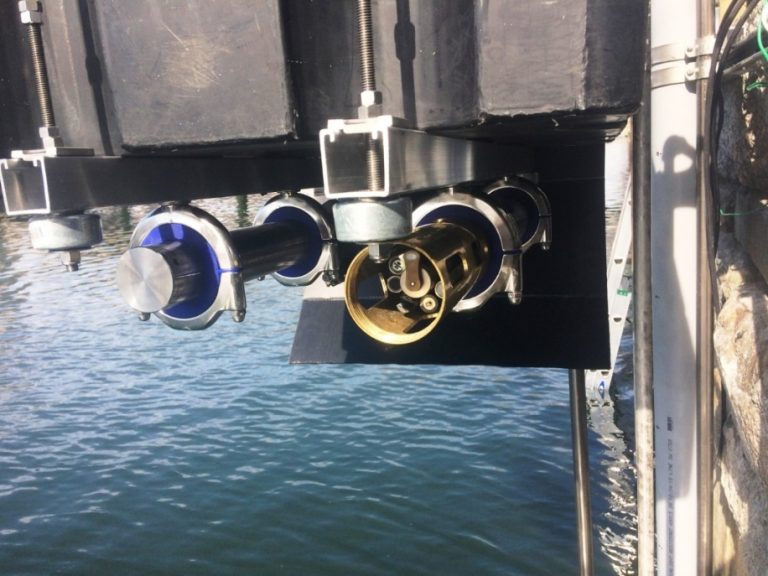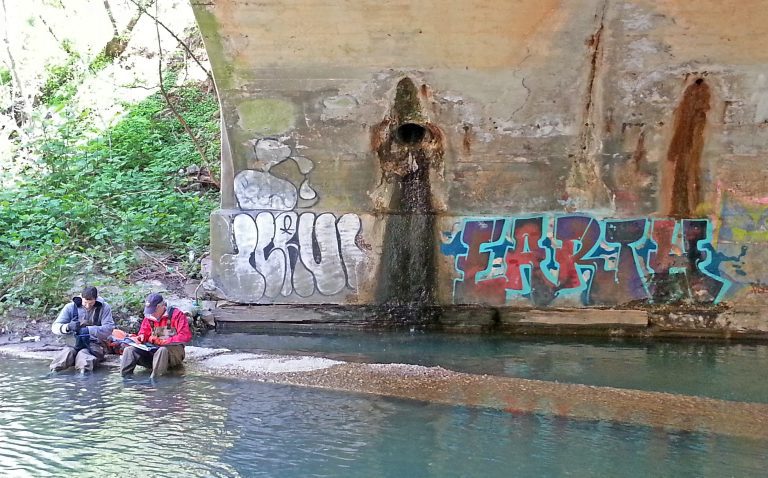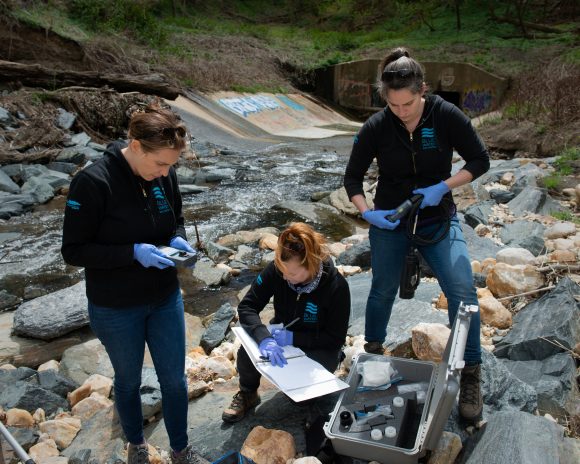Taking Our Data to the Next Level
Today, Blue Water Baltimore, the home of the Baltimore Harbor Waterkeeper, announced that our tidal water quality monitoring program has achieved Tier III status through the U.S. Environmental Protection Agency’s Chesapeake Bay Program (EPA CBP). This is the highest standard set by EPA for non-traditional monitoring entities, and means that the tidal data we routinely collect in the Baltimore Harbor, the Patapsco River, and its tidal tributaries is of equal quality to EPA CBP’s own data.
So, what does this new designation mean? While we’ve been collecting this rigorous data since 2013, the EPA has historically relied on information from only a small handful of stations that are monitored by the Maryland Department of Natural Resources to categorize the health of the entire Patapsco River. Now that our program has been reviewed and audited, data from our 22 tidal monitoring stations will be integrated into EPA’s larger database, and will be used to inform state, regional, and federal decision-making on water quality issues more directly.
More localized information about the health of our waterways helps the scientific and regulatory community make all sorts of important decisions ranging from calculations of the low-oxygen “Dead Zones” that plague the Chesapeake Bay and its tributaries in the summer months, to ensuring that our waterways are achieving their state-mandated water quality standards throughout the year. Having a reliable source of long-term data allows us to determine a baseline of water health in the Patapsco River, which ultimately helps us hold polluters accountable and enables us to advocate for stronger laws for clean water.
To reach this Tier III designation, Blue Water Baltimore worked collaboratively with the Chesapeake Monitoring Cooperative (CMC) to have our monitoring program reviewed and audited by the EPA CBP’s Data Integrity Workgroup. CMC’s data collection initiative is the first of its kind in the nation to work with organizations like Blue Water Baltimore so as to harness the power of nontraditional monitoring. The CMC was formed in 2014 through a six-year EPA grant that supported the Alliance for the Chesapeake Bay, in collaboration with Dickinson College’s Alliance for Aquatic Resource Monitoring, Izaak Walton League of America, and University of Maryland Center for Environmental Science, to spearhead the initiative to integrate community-collected data into bay-wide assessment and management strategies.
In addition to the 22 tidal stations recognized by the new designation, the Baltimore Harbor Waterkeeper program of Blue Water Baltimore also monitors water quality at 27 non-tidal stations throughout the Jones Falls and Gwynns Falls watersheds every month. Check out our recently released 2017 assessment of water health at www.HarborAlert.org, part of a new data platform that allows visitors to glean more information than ever before about the health of our waterways.







